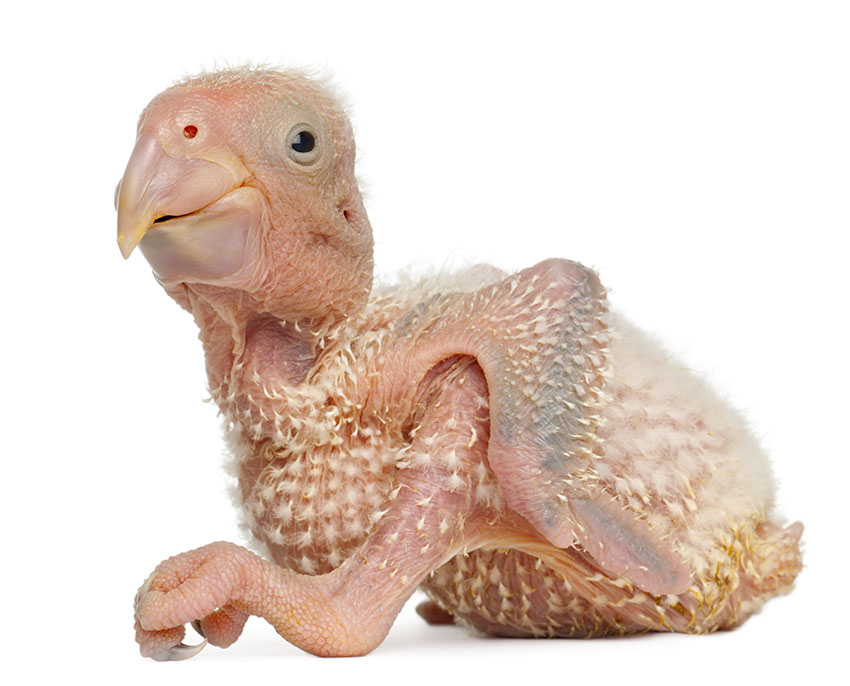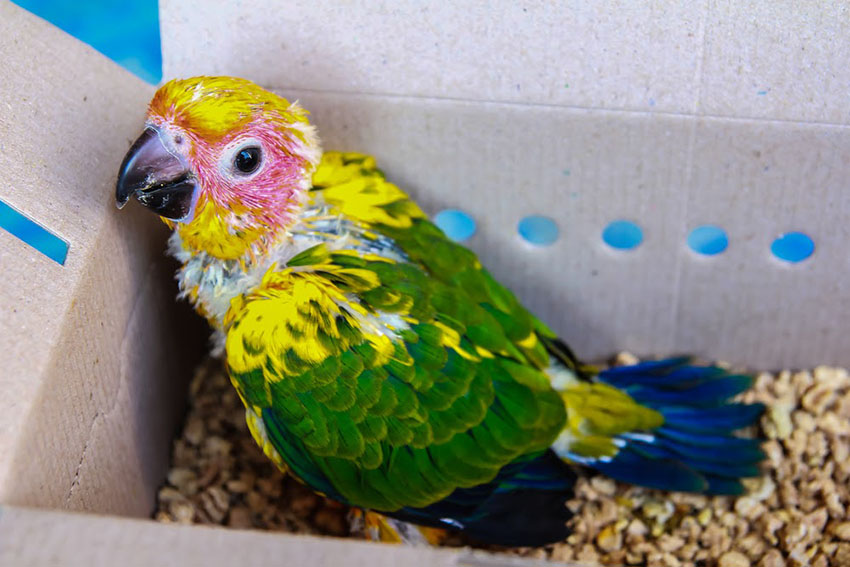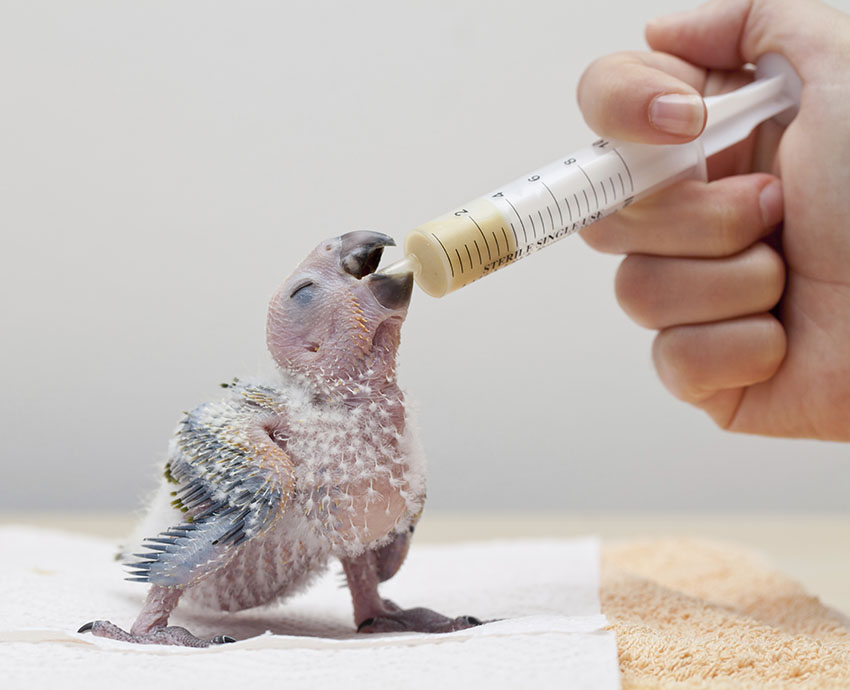
African Grey Parrot chick
Once weaned, the chicks will need a separate ‘nursery’ section of aviary, before being introduced to other adult birds.
New birds should be ringed, with a leg ring of the correct size for your species of bird. This is a standardised item, and will contain details of the bird, its breeder, and the time of birth. Some breeders fit their own personalised plastic rings too. For advice on this, speak to a breeder – and never attempt to ring a bird without learning how to do so from an expert.

Sun Conure chick
Before and after weaning, baby parrots need a supply of soft seeds. If a parent fills its chick’s crop with dried seed, the chick is likely to die. You will need to provide egg food (see the Parrot Food section of this guide), plenty of soaked and sprouted seeds, soft vegetables, cooked sweet corn kernels, and plenty of greens, including chickweed and dandelion leaves.
The soft foods should be available to weaned birds for several weeks after their ‘independence’. It takes time for their digestive systems to become robust enough to cope with pellets and dried foods, and they will forage appropriately at a feeding station as long as the soft food is there for them.
In many species of parrot the male feeds the hen a regurgitated seed porridge while she’s sitting, and she will feed the chicks until they leave the nest. The cock may then join in the chick-feeding, but in many species the female does all the weaning.
Once the chicks have all hatched, droppings will accumulate rapidly. You need to clean out the nest box at least once a week. Remove as much of the soiled material as you can, but don’t shove the chicks around too much as you endeavour to clean their nest.
For hand-rearing parrots, you will need to seek specialist advice, as each species has different requirements.

African Grey Parrot chick being hand-fed
You will frequently read that if you start handling the chicks at two weeks old, they will be relatively hand-tame by the time they fledge. Logic suggests that this will make it easy to train them later; but the point is often pushed too far. Parrots can be tamed and trained, even if they have never been hand-fed, so don’t feel this is something you have to do. In fact, given the hazards of inexperienced hand-feeding of very young birds (including impacted crops, crop burn and mouth injuries), it’s something you should avoid if possible.
Comments
Ali, 23 April 2020
Mckaw parrot chick